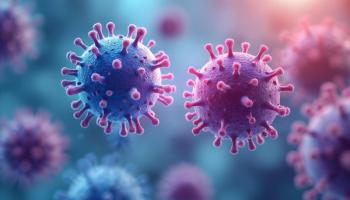
Scientists Use Fruit Flies to Unlock Secrets of Eye Cancer Cells
Protein found to play vital role in development of disease.
Protein found to play vital role in development of disease.
Researchers have turned to an unlikely source, the fruit fly, in efforts to determine the cause of eye cancer in humans.
In a study published in the current issue of the Journal of Biological Chemistry, scientists from Michigan State University examined a set of mutations similar to those present in the cancer gene of humans.
"By systematically evaluating mutations of increasing severity, we now have a model to better predict how we think the protein will react with each mutation," said Irina Pushel, MSU undergraduate and study co-author in a press release. "We're trying to understand the protein, not even in the specific context of cancer, but rather studying how it interacts within the cell, how it interacts with DNA."
The retinoblastoma protein aids in controlling cell growth and development when it’s healthy. In an abnormal state, however, cells overgrow similarly to cancer or die prematurely, like they do with other human diseases.
A specific part of retinoblastoma has been previously found be a factor in regulating other genes.
Due to the fact that fruit flies are similar to humans in terms of genetics, the insects can aid in the advancement of treatments for people.
"If we find one of these mutations in a human, then we can predict what will happen with the protein, such as folding incorrectly," Pushel said. "This isn't going to immediately lead to a new drug to treat cancer. However, we have to know how the protein works before we can develop a drug to fix it. Future medicines will be built upon models such as this, though that is years away."
As part of the study, the researchers modified some of the known vital parts of this region of retinoblastoma.
By boosting levels of standard or wild-type, the protein was able to alter the eyes and wings of the fruit flies. When the mutated protein began to increase, deformations were “consistent and dramatic,” the researchers noted.
The study noted that a treatment based on this research may be years into the future, however the findings do provide a better understanding into cell development and gene regulation.
"That's the cool thing about basic research; it may not lead directly to the creation of a new drug, but it helps decipher the genetic code, which for each person controls the unique pattern of how they grow and how they develop -- that's amazing," Pushel said. "It will have many impacts, from understanding development to personalized medicine."
Newsletter
Stay informed on drug updates, treatment guidelines, and pharmacy practice trends—subscribe to Pharmacy Times for weekly clinical insights.


















































































































































































































